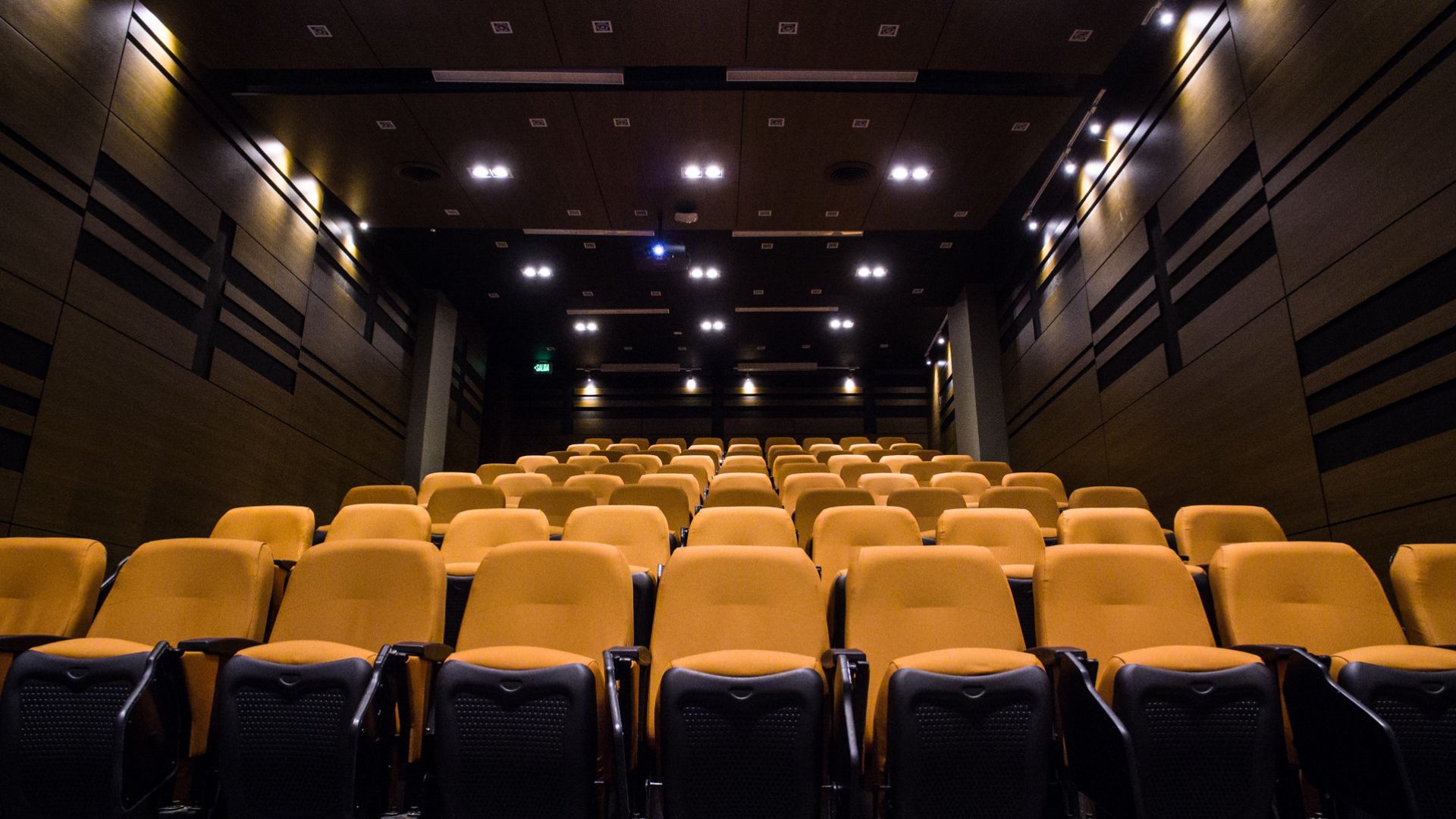Table of contents
Creating the perfect home theater experience is about more than just the latest tech and the comfiest seats. It’s about acoustics. At Schaller Design Lab, we understand that sound is a critical piece of the cinematic puzzle.
We’ll guide you through the essentials of home theater acoustics, from soundproofing to speaker placement. Let’s dive into the world of immersive sound and transform your space into an audiovisual haven.
Importance of acoustics in a home theater
Enhancing Sound Quality
In every home theater, sound quality reigns supreme. It’s not just about volume; it’s about clarity, depth, and the overall richness of the audio that takes an entertainment experience from mediocre to mesmerizing. To enhance sound quality, acoustics must be a priority. Our ears are sensitive instruments, and they can discern the difference between sharp, detailed audio and muffled, distorted sounds. At Design Lab, we understand that to achieve high-definition audio, every element from speaker technology to room shape must be considered.
Speakers should be positioned strategically to align with the listener’s ears, maximizing sound delivery and minimizing loss. Acoustic treatments like absorptive panels and diffusers can also be employed to control sound reflections. These treatments ensure that sound travels directly from the speakers to the listener’s ears without unnecessary bouncing around the room. Moreover, fine-tuning your system with a calibrated receiver helps manage sound levels to create a balanced and immersive listening environment.
Minimizing Echo and Reverberation
Echo and reverberation can wreak havoc on your home theater’s sound. They create a confusing mix of noises, making it difficult to discern dialogue, appreciate a film’s score, or locate the direction of special effects in audio. To tackle this, soundproofing becomes a vital ally. By installing materials specifically designed to dampen these acoustic anomalies, such as acoustic foam or bass traps, our spaces become a clean slate for sound.
Reducing echo and reverberation isn’t just about adding materials; it also involves strategic layout planning. In collaboration with Design Lab, we go beyond standard practices by examining how furniture, carpeting, and even the shape of the room contribute to acoustics. Each item within the theater influences how sound waves travel, absorb, or reflect, and understanding these interactions is paramount to creating an optimized listening experience.
Understanding room dimensions and layout
The Impact of Room Size on Acoustics

Experience cinema at its finest with this luxurious home theater, featuring plush seating, advanced lighting, and optimized acoustics.
When it comes to home theater acoustics, the size of the room plays a pivotal role. A well-designed space resonates with clear, immersive sound that can either transport us to the heart of the action or leave us straining to hear dialogue. At Design Lab, we’ve discovered that larger rooms tend to produce more echo, which may lead to a muddied sound quality. Smaller rooms, while often providing clearer sound, can sometimes feel cramped and may result in a boomy bass response. It’s about striking the right balance.
Key factors to consider include:
- Ceiling height, as greater space overhead allows sound to dissipate, reducing echo.
- Room width, which affects how sound waves travel laterally and interact with walls.
- Room length, impacting the propagation of sound waves from front to back.
By understanding the acoustics of different room sizes, we optimize sound for any given space. Sound waves must be controlled to prevent them from bouncing around too much in large rooms or being too constrained in small spaces.
Optimal Speaker and Seating Placement
Strategic placement of speakers and seating is essential to achieving the ultimate audio experience. In a home theater system, the speakers are the stars, and their location determines the quality of the sound. To create the sweet spot where audio seems to envelop us, we adhere to tried-and-tested standards.
Frontal speakers should be placed at ear level when we’re seated, forming an equilateral triangle with the primary listening position. This ensures each sound arrives synchronously, enveloping us in a cohesive auditory bubble. The center speaker, crucial for clear dialogue, aligns directly with the display and the main seat. Surround speakers settle slightly above ear level, angled toward the audience, to craft an encompassing sound field.
The seating arrangement also demands attention. We’ve found that seats too close to walls risk absorbing excessive bass, whereas those placed centrally enjoy a balanced audio spectrum. For optimal bass distribution, multiple subwoofers can be positioned throughout the room to even out low-frequency response.
Here’s a quick reference for speaker setup:
- Front Left and Right Speakers: At ear level, equal distance from the screen
- Center Channel: Aligned with the screen, directly facing the main seating area
- Surround Speakers: Above ear level, angled to face the listeners
Calculating the best arrangement takes precision, but it’s worth the effort for that perfect sonic ambience. With a well-planned room layout and speaker positioning, our home theaters deliver an immersive sound that rivals commercial cinemas.
Managing room reflections and echoes
Acoustic Treatment Options
When tackling the challenge of room reflections and echoes, we must consider a range of acoustic treatment options. These solutions are specifically designed to enhance sound quality and create the precise audio environment that home theaters require. By installing acoustic panels and bass traps, we control unwanted frequencies and reduce the negative impact of sound waves bouncing off hard surfaces.
Acoustic panels are typically made from foam or fiber materials, and are strategically placed on walls and ceilings. They target mid to high-frequency sounds, which often contribute to harsh echoes. On the other hand, bass traps are installed in room corners where low frequencies tend to accumulate. This combined approach significantly improves sound clarity and detail.
Our team at Design Lab often recommends a mixture of absorptive and diffusive acoustic treatment. This blended strategy ensures we both manage and enhance sound characteristics within the home theater.
Use of Diffusers and Absorbers
Diffusers and absorbers play pivotal roles in refining our home theater’s acoustics. Understanding their unique functions helps us to optimally balance the room’s sound.
Diffusers are designed to scatter sound waves, thereby reducing focal points of reflections and encouraging a more even sound distribution. They’re particularly useful in eliminating ‘hot spots’ where sound may be excessively loud or clear, as opposed to other areas of the room. Our expertise in positioning diffusers allows for a more natural and immersive listening experience.
Absorbers, as their name suggests, work by soaking up sound energy, especially higher frequencies that often result in unwanted echo. They help us in achieving a “dead” space, which prevents reflections from muddying the clarity of dialogue or the crispness of high-fidelity audio tracks.
At Design Lab, we’re meticulous in identifying the perfect balance between diffusive and absorptive elements. Our goal is a seamless audio environment where sound moves freely and without distortion, immersing listeners in the moment, whether they’re enjoying a cinematic masterpiece or an intense gaming session. With these treatments, we set the stage (or rather, the room) for an exceptional auditory journey that rivals any commercial cinema’s acoustics.
Soundproofing the home theater
Reducing Sound Leakage
In crafting the perfect home theater experience, it’s essential to address the issue of sound leakage. Soundproofing the space ensures that our favorite movies don’t become a source of annoyance for others in the home or the neighbors. Door seals and weather stripping play a vital role in minimizing gaps under and around doors where sound can easily escape. We also recommend installing heavy solid-core doors or adding mass-loaded vinyl to existing doors to further dampen sound transmission.
Wall outlets are often overlooked culprits for sound leakage. By fitting acoustical putty pads behind outlet and switch plates, we effectively seal these openings. If the theater room shares a wall with a noise-sensitive area, we’ll invest in a second layer of drywall with Green Glue noise-proofing compound in between, significantly reducing sound transmission to adjoining rooms.
Soundproofing Materials and Techniques
At Design Lab, we understand that utilizing the right soundproofing materials and techniques is key to achieving stellar audio performance. Superior soundproofing calls for the use of dense materials that can block sound waves. Some of the most effective materials include:
- Mass-loaded vinyl
- Sound isolation clips
- Resilient channel
- Acoustic foam or fiberglass panels
One of the most reliable techniques is the room-within-a-room concept, which involves constructing a secondary interior wall and creating an air gap between it and the existing wall to dampen sound. This method can be labor-intensive but provides excellent isolation.
Another popular approach is to use resilient channel, which is a thin metal channel that effectively decouples the drywall from the stud frame. This separation reduces the pathway for sound to travel through the walls and ceiling. It’s important to install resilient channel correctly; improper installation can lead to less effective soundproofing.
For the ceiling, acoustic drop ceilings or suspended ceiling systems can offer substantial soundproofing benefits. These systems allow us to add layers of soundproofing materials without significant structural changes. Combine this with acoustic tiles and the home theater’s ceiling won’t just reduce sound leakage—it’ll help manage reverberations within the room itself.
In floors, we often suggest installing a soundproofing underlayment or a floating floor to add mass and dampen vibrations. Carpets with thick padding also add a degree of sound absorption, contributing to both soundproofing and acoustic treatment of the home theater.
Our implementation of these soundproofing materials and techniques at Design Lab is meticulous and tailored to each home theater design. We ensure that every detail is attended to so that our home theater not only sounds great within but keeps the experience contained for outside peace and tranquility.
Calibrating audio equipment for optimal performance

Immerse yourself in the magic of cinema with this cozy living room, featuring a large projector screen and plush seating.
When it comes to enhancing the acoustic experience in our home theaters, calibrating our audio equipment is as crucial as the selection of the speakers and acoustic treatment. This practice ensures that the system performs at its peak within the unique constraints of our space. Let’s delve into the details of configuring our setups for an audio experience that rivals any commercial cinema.
Speaker Setup and Positioning
Proper speaker setup and positioning form the foundation of pristine sound quality. At Design Lab, we’ve found that following these essential steps maximizes audio performance:
- Main Speakers: Place these at ear level, angled slightly towards the listening position, forming an equilateral triangle with the viewer.
- Center Channel: Align this directly below or above the TV or projector screen, ensuring it’s angled towards our ears for crisp dialogue.
- Surround Speakers: These should be slightly behind and above our listening area, spread out to create an enveloping sound field.
- Subwoofers: For deep bass that you can feel, one or more subwoofers can be placed in front of the room or wherever bass response is most even throughout the seating area.
Correct speaker positioning depends on a symmetrical layout and the absence of immediate obstructions that might deflect sound waves in unintended directions. Our aim is a balanced soundscape where every seat is the best seat in the house.
Room Correction Software
Room correction software takes our home theater’s acoustic clarity to the next level. Using a microphone to analyze the room’s acoustics, the software adjusts the output of each speaker to compensate for any architectural oddities or furnishings that affect sound waves. Design Lab recommends using high-quality room correction software for:
- Acoustic Measurement: It identifies frequency response peaks and dips, as well as time-based anomalies due to reflections.
- Automatic Calibration: The software aligns speaker levels, crossover frequencies, and equalizes the system for a unified sound field.
- Manual Tweaks: For the enthusiasts who desire a more hands-on approach, most room correction systems offer the ability to fine-tune settings manually.
Integrating room correction software into our home theater system helps in achieving audio fidelity that’s tailored specifically for our room’s unique acoustic characteristics. With these technological marvels, we take the guesswork out of calibration, leading to a more refined and immersive audio experience.
By meticulously setting up and positioning our speakers and utilizing cutting-edge room correction software, we ensure that our home theater’s audio system is fully optimized.
Conclusion
We’ve seen how vital acoustics are to the home theater experience. By strategically placing speakers and employing acoustic treatments, we can significantly enhance sound quality. With the right calibration and room correction software, our home theaters can rival the immersive audio of commercial cinemas. Let’s embrace these techniques to ensure every movie night is an auditory delight. Here’s to creating the ultimate listening environment in our own homes.
Frequently Asked Questions
What are the key factors in improving acoustics in a home theater?
Acoustic improvement hinges on strategic speaker placement, use of acoustic treatments to minimize unwanted sound reflections, and calibrating audio equipment to suit the specific room acoustics.
How does speaker placement affect sound quality?
Optimal speaker placement ensures that sound waves reach the listener’s ears correctly, creating a balanced and immersive listening experience.
Why are acoustic treatments necessary in a home theater?
Acoustic treatments are essential to control sound reflections, reduce echoes, and avoid sound distortions that can degrade the overall audio quality in a home theater.
What role does room calibration play in audio performance?
Room calibration involves adjusting the audio output of speakers based on the room’s unique acoustics to achieve optimal sound performance.
Can room correction software impact home theater sound quality?
Yes, room correction software can make precise adjustments to speaker output that compensates for the acoustical properties of the room, significantly improving sound quality.
What should be considered for speaker setup and positioning?
For the best experience, consider the layout of the room, the listener’s primary seating area, and adhere to recommended angles and distances for speaker positioning from audio equipment manufacturers.
Our Portfolio
Table of contents


















